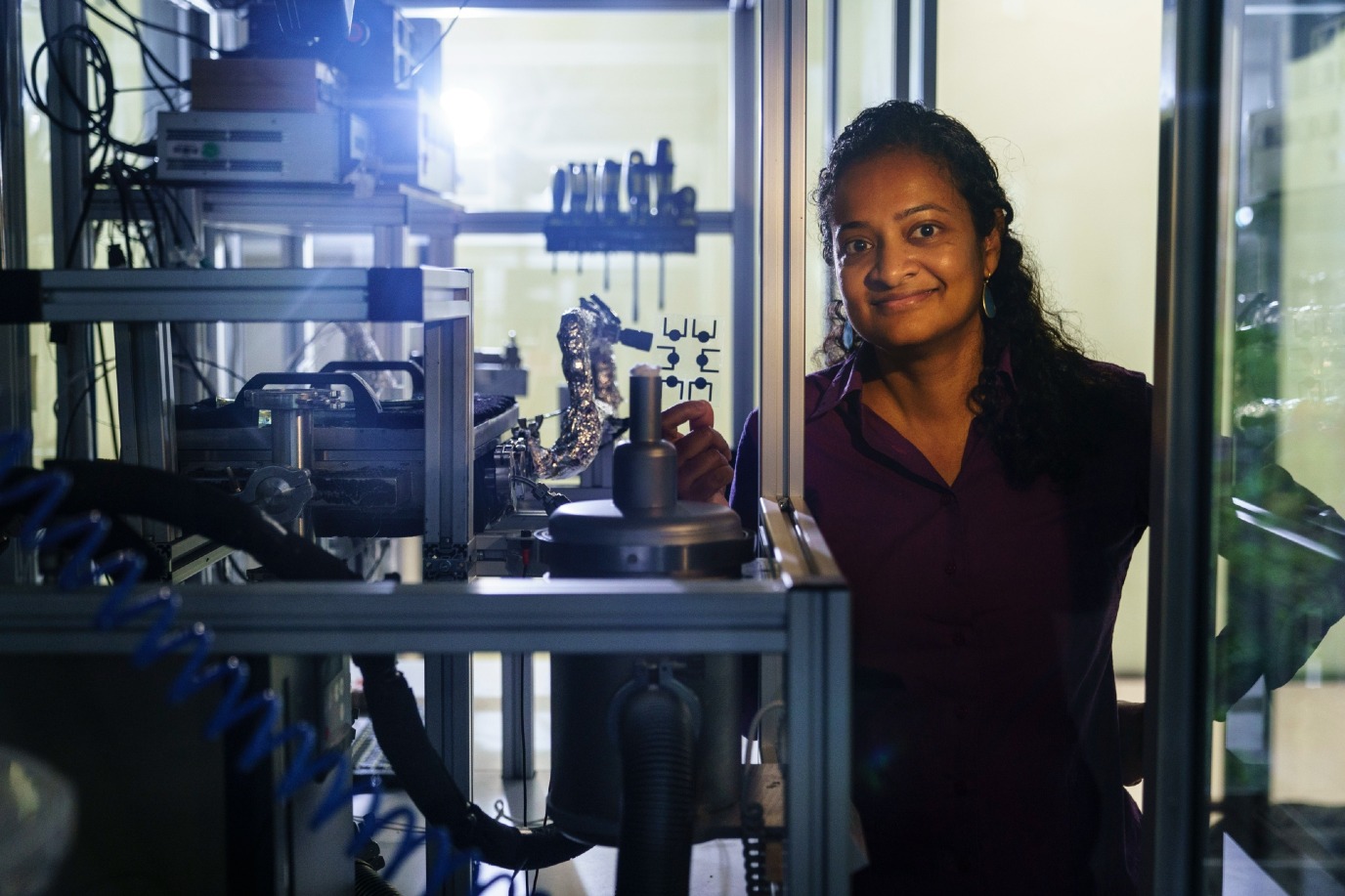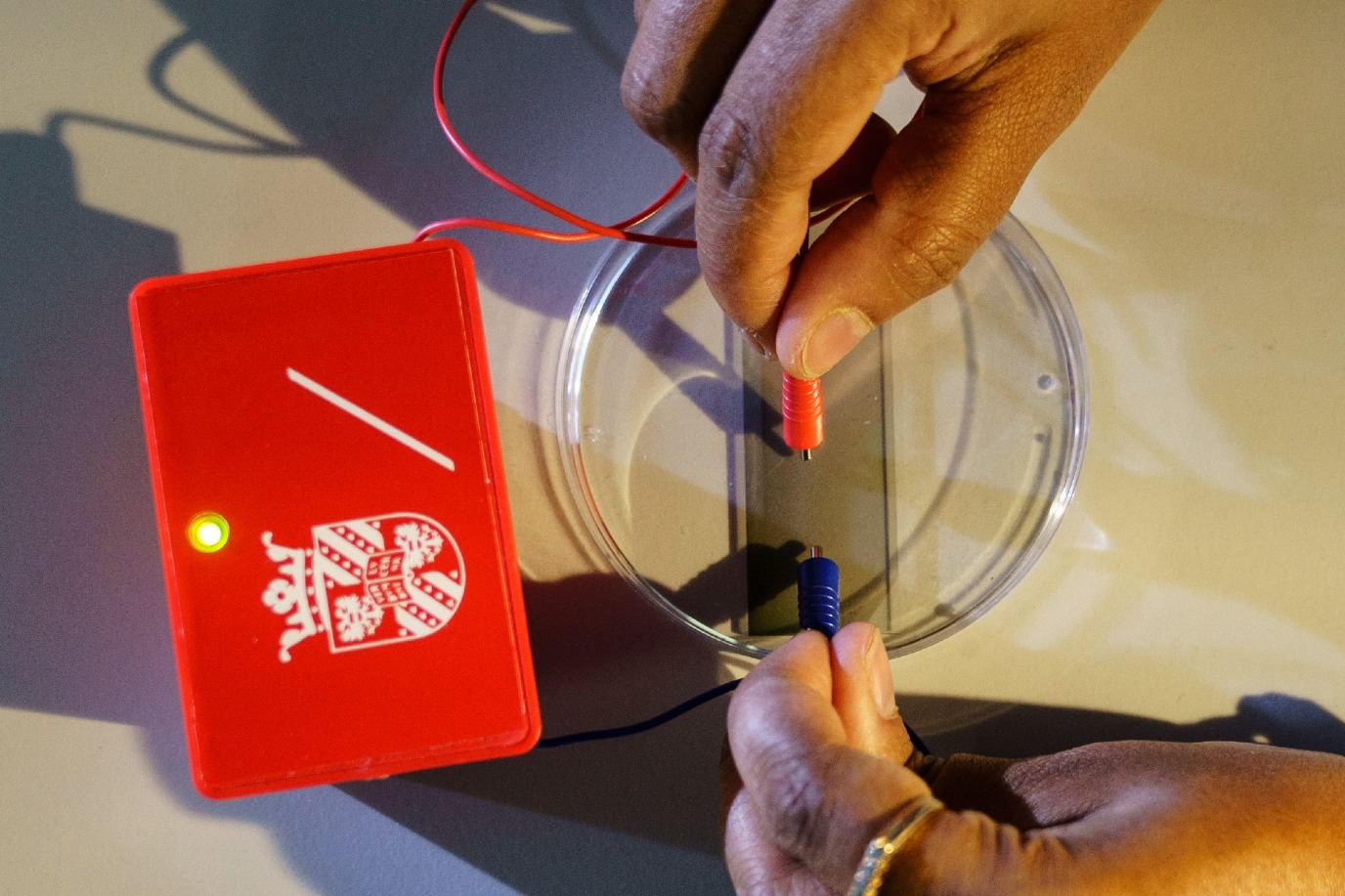Flexible solar panels and a tattooed sensor
The black dots and lines on this plastic plate conduct electricity, and are as flexible as the plastic it is on. And that is special, Ranjita Bose, associate professor of Polymer Engineering, explains: ‘It’s a conductive polymer that combines the flexibility of plastics with the conductivity of metals.’ Bose can apply this coating in any pattern, and even on delicate materials such as textile fibres or human skin.



The applications of such a conductive polymer seem endless. Bose elaborates: ‘Imagine solar panels on a flexible surface, such as your backpack or a flexible screen. Think of a battery that contains a coated solid instead of a liquid, or a sensor that can be worn directly on the body.’ In case of the latter, this could even take the form of a tattoo.
The example shown in the photos was specifically designed for a medical application: monitoring wound healing. ‘When a wound starts to infect, the acidity decreases,’ Bose explains. This change affects the conductivity of the coating. By applying this coating directly on the skin near a wound, it becomes possible to detect early signs of infection.
PhD student Adrivit Mukherjee has already tattooed the conductive polymer onto his skin, after lab research had shown that the material does not harm human tissue. The fact that this is possible is precisely what is so special about this work, Bose explains: ‘Normally, you would make a conductive polymer in multiple steps: first, you make the polymer, then some post-processing follows to make it conductive. But if the material you want to coat is delicate, it won’t be able to withstand this post-processing. Our conductive coating is done in one step, without solvents, acids, or extreme temperatures.’
Text: FSE Science Newsroom | Charlotte Vlek
Photos: Reyer Boxem
Every two weeks, UG Makers puts the spotlight on a researcher who has created something tangible, ranging from homemade measuring equipment for academic research to small or larger products that can change our daily lives. That is how UG researchers contribute to the solutions for big scientific and societal challenges.
For decades, engineering teaching and research at the UG has been part of a wide array of strong disciplines, and from a national point of view, our collaboration with the four technical universities is becoming more and more intensive.
Previous portraits of Makers can be found on the overview page
More information
More news
-
30 October 2025
How to make batteries safer
-
23 October 2025
Storing electric power in a fluid
